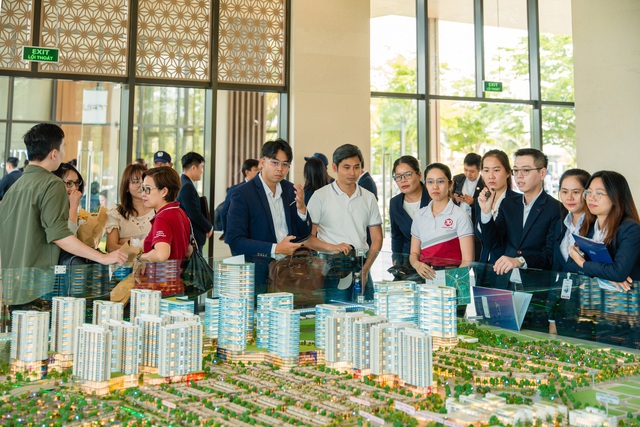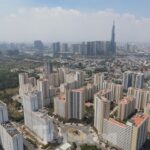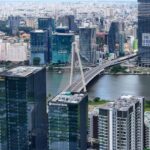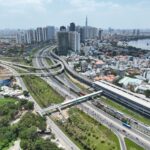Hanoi Real Estate Investors Go South
After maintaining an average growth rate of 20-40% per year for over two years, Hanoi’s real estate market is expected to stabilize in the short and medium term. This has prompted investors to redirect their capital to the southern region of Vietnam.
According to data released by CBRE Vietnam in early April, the primary market price of Hanoi apartments averaged approximately 75 million VND per square meter, excluding VAT, maintenance fees, and discounts. While 34% higher than the same period in 2024, this price was only 3% higher than the previous quarter. This is the lowest quarterly increase since the second quarter of 2023.
Experts attribute this slowdown to the normal cycle of the real estate market. Like other asset markets, after a period of high price growth, the Hanoi apartment market is adjusting to a new price level.

The trend of real estate investors moving south will continue to gain momentum in the coming period.
Over the past five years, low-rise housing prices in Hanoi have continued to rise, with linked houses increasing by 22% per year and shophouses by a more modest 11-16%. The average land price in November 2024 was 70 million VND per square meter in Hanoi, compared to 57 million VND in Ho Chi Minh City. Experts predict that future real estate investment opportunities will focus on this region, anticipating a significant price increase from early 2025 onwards.
Moreover, thanks to the legal framework provided by new laws, the real estate market in the South, especially in Ho Chi Minh City and surrounding areas, is entering a recovery cycle. Capital is flowing back into the market, accompanied by new project supplies that offer quality, clear legal status, and high growth potential. Among these, real estate in the East of Ho Chi Minh City (known as the “East area”) is experiencing a boom, becoming an investment hotspot due to its superior strategic location and well-developed infrastructure.
Izumi City: A Smart Investment Anchor in the Heart of the East
One of the key attractions of the East area is its intra-regional and inter-regional infrastructure. The economic centers and industrial hubs of Vietnam, including Ho Chi Minh City, Thu Duc City, and Bien Hoa City, are connected by the corridor along the Dong Nai River, which is being developed into a new economic center and a rapidly growing area in the East. This area boasts some of the most modern transportation and industrial infrastructure in the country.
Strategically located at the intersection of Nam Cao and Huong Lo 2 roads, Izumi City is just a 30-minute drive from the center of Ho Chi Minh City. It offers easy access to Thu Duc City and Bien Hoa City in Dong Nai province. The project also benefits from the development of major infrastructure projects, such as the Ben Luc – Long Thanh Expressway and the Bien Hoa – Vung Tau Expressway.

Izumi City Phase 1 features a modern compound design, surrounded by a natural and refreshing garden.
Just a 30-minute drive from the upcoming Long Thanh International Airport, Izumi City enjoys an ideal location that is both conveniently connected to the region’s business hubs and secluded enough to offer a private, peaceful, and healthy living environment.
Within a 5-kilometer radius, Izumi City provides easy access to major transportation routes connecting the Asian development quadrangle, including National Highway 51, National Highway 1A, Hanoi Highway, My Phuoc – Tan Van – Nhon Trach Highway, Ho Chi Minh City – Long Thanh – Dau Giay Expressway, and Metro Line 1 (Ben Thanh – Suoi Tien – Bien Hoa).
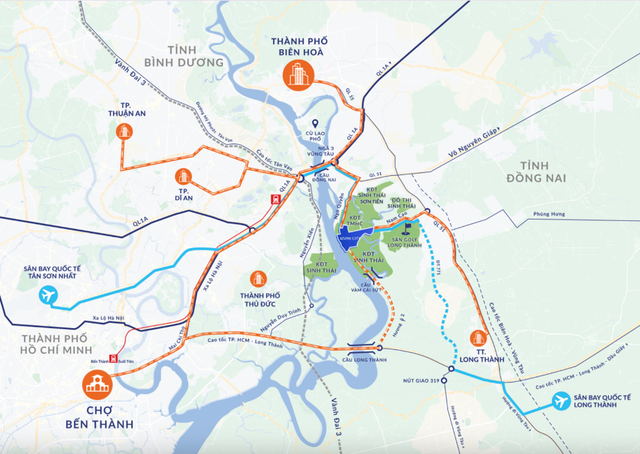
Izumi City boasts multi-point connectivity: air, land, and water.
Mr. Nam Hung, a real estate investor from Hanoi, shared his thoughts: “Izumi City is not the first project I’ve invested in with Nam Long. With the strategic roads being developed by the government and the developer, connectivity will be extremely convenient for residents. For example, I can fly into Long Thanh Airport from Hanoi and easily reach the project, or access it from District 9. It’s very accessible.”
Commenting on the market, Mr. Han Van Huynh, a representative of Dat Xanh Northern Region, said: “Currently, in Hanoi, the prices of houses, shophouses, and apartments in well-planned urban areas similar to Izumi City are very high. Therefore, it is inevitable that investors will look for more affordable options like Izumi City.”
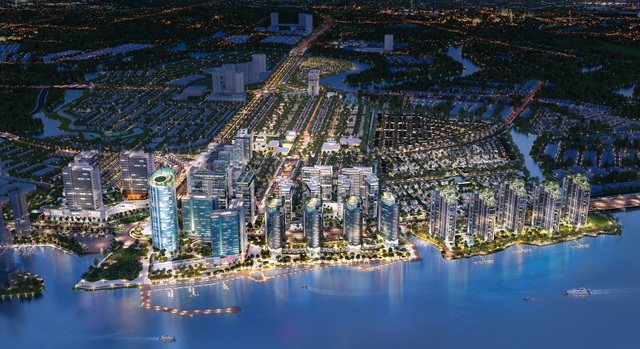
The grand vision of Izumi City.
In collaboration with Japanese partner Hankyu Hanshin Properties Corp., Nam Long has developed Izumi City not just as a livable space but also as a place for learning, entertainment, work, and leisure. It is also a sustainable investment channel in the heart of the eastern urban area of Ho Chi Minh City.
For more information about Izumi City, please visit www.izumicity.vn
The Great Detached Home – Villa Conundrum: An Unexpected Twist
“David Jackson, CEO of Avison Young, recently shared his insights on the future supply of villas and townhouses in Ho Chi Minh City. He emphasized that the majority of upcoming developments in these segments will be concentrated in the city’s satellite towns. This centrifugal direction is set to be the leading trend, shaping the real estate market.”
Ho Chi Minh City: Unlocking Dynamic Growth, No Halt in Public Investment Amid Mergers.
The Ho Chi Minh City People’s Committee has issued a directive to prevent any disruption to public investment due to pending administrative mergers or changes. The committee emphasizes that any delays in investment projects caused by awaiting structural reforms will be subject to strict action.
The Evolution of Metro No.1: A Five-Month Journey and Beyond
The proposed completion date for the metro line 1 in Ho Chi Minh City has been pushed back to the second quarter of 2025, despite the commencement of operations in December 2024. This delay is attributed to the fact that several auxiliary items have yet to be constructed, necessitating additional time to ensure the project’s completion.

